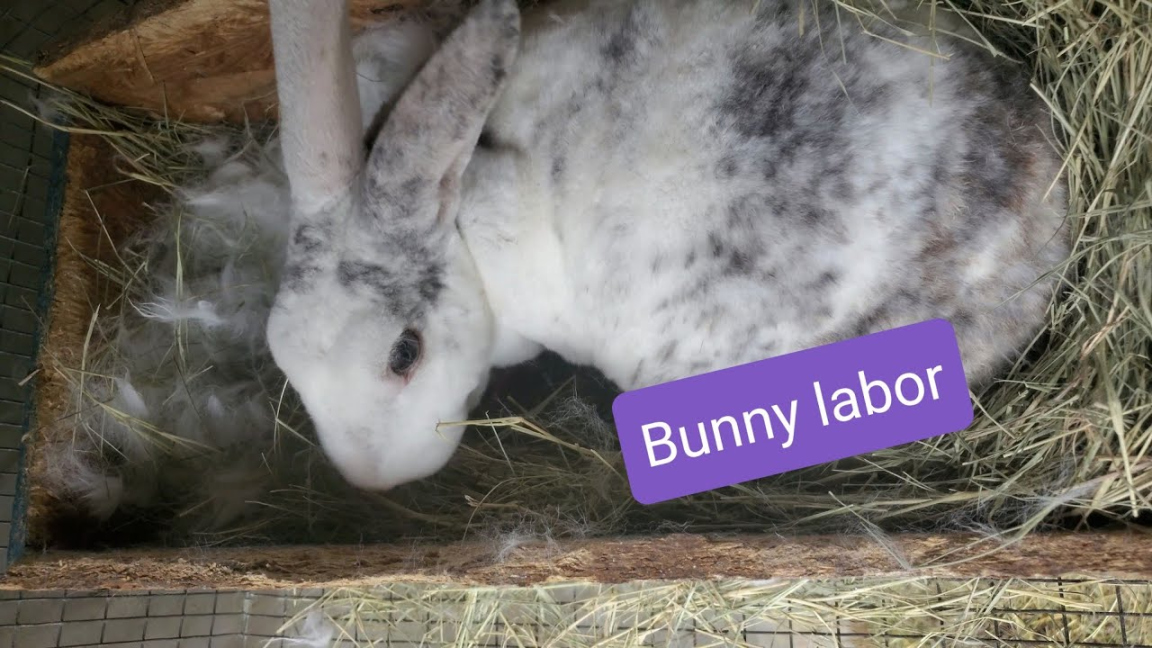What Do Rabbit Contractions Look Like?
Rabbit contractions, also known as labor contractions, are a crucial part of the birthing process for rabbits. These contractions help the mother rabbit expel the babies from her uterus and into the world. Understanding what rabbit contractions look like can help rabbit owners recognize the signs of labor and ensure the mother rabbit receives the necessary care and assistance during this critical time.

Signs of Rabbit Contractions
1. Nesting Behavior
Prior to the onset of contractions, a pregnant rabbit may exhibit nesting behavior. This includes digging and rearranging bedding materials to create a comfortable and secure space for giving birth. Nesting behavior is an indication that the rabbit is preparing for labor and should be closely monitored.
2. Muscle Contractions
During labor, a rabbit will experience muscle contractions in the area surrounding her uterus. These contractions are caused by the release of oxytocin, a hormone that stimulates the muscles to contract and aid in the birthing process. The contractions can be observed as rhythmic movements of the rabbit’s abdomen.
3. Restlessness and Agitation
A rabbit in labor may become restless and agitated. She may pace, scratch at her nesting area, or continually change positions. This behavior is a result of the discomfort and pain associated with the contractions. It is essential to provide a quiet and safe environment for the rabbit during this time to minimize stress.
4. Vocalizations
Some rabbits may vocalize during contractions. These vocalizations can range from low grunts to high-pitched squeals. The intensity and frequency of the vocalizations may vary between individuals. It is important to note that not all rabbits will vocalize during labor.
Assisting a Rabbit in Labor
While rabbits are generally capable of giving birth without assistance, there are cases where intervention may be necessary. If the mother rabbit appears to be in distress or if more than 30 minutes have passed between the birth of each kit (baby rabbit), it is advisable to seek veterinary assistance. In the meantime, there are a few steps you can take to provide support:
- Ensure a quiet and calm environment for the rabbit
- Keep an eye on the progress of contractions
- Do not intervene unless there is an emergency
- Make sure the mother rabbit has access to fresh water and food
- Monitor the temperature and humidity of the birthing area
Frequently Asked Questions (FAQs)
How long does labor typically last for rabbits?
The duration of rabbit labor can vary but is usually between 15 and 30 minutes for each kit. However, it is not uncommon for breaks of up to an hour to occur between the birth of each kit.
Can I touch the newborn kits?
It is generally best to avoid touching the newborn kits immediately after birth. The mother rabbit may be sensitive and may reject the kits if they carry unfamiliar scents. Allow the mother rabbit to clean and care for the kits herself.
What should I do if a kit is born with the amniotic sac still intact?
If a kit is born with the amniotic sac intact, the mother rabbit will typically break it open and clean the kit. However, if she does not do it within a few seconds, you can gently remove the sac using a clean towel or your hands. Be careful not to harm the kit during the process.
When should I be concerned and seek veterinary help?
You should seek veterinary assistance if the mother rabbit is in severe distress if more than 30 minutes have passed between the birth of kits, or if you notice any signs of complications such as excessive bleeding or the presence of a stuck kit.
Related Articles…
Copyright Notice:
All images on this website are obtained from the internet and remain copyrighted to their original owners. If you hold copyright to any image and want it taken down, please reach us.